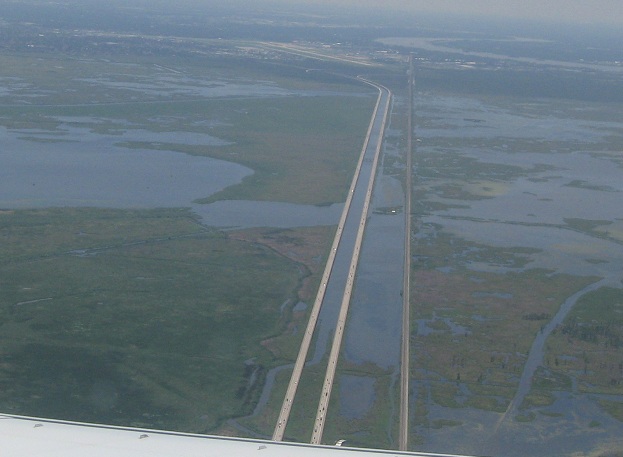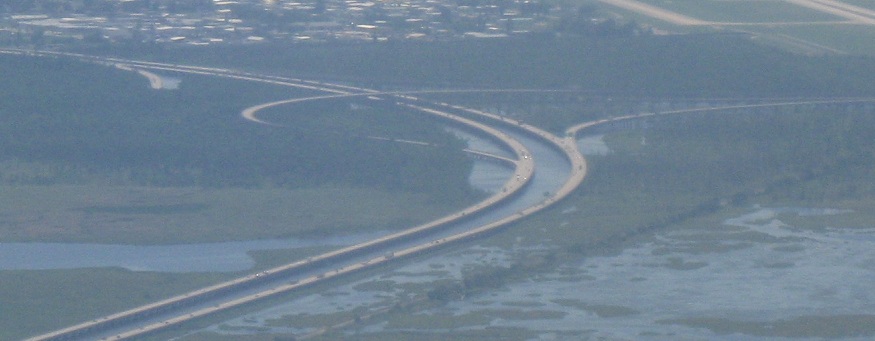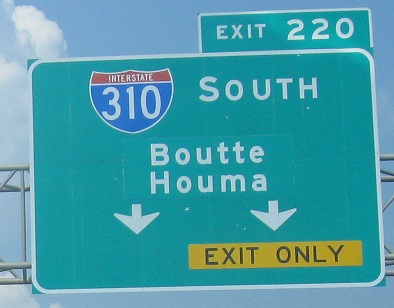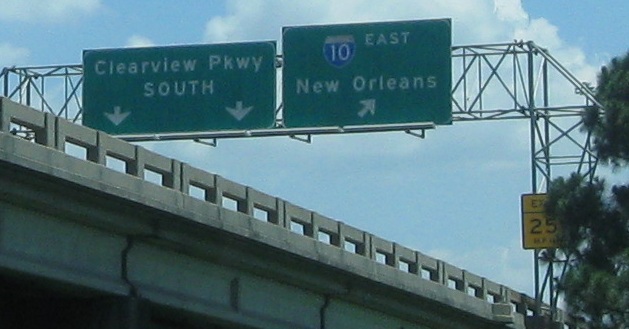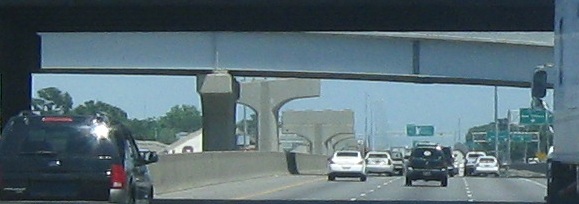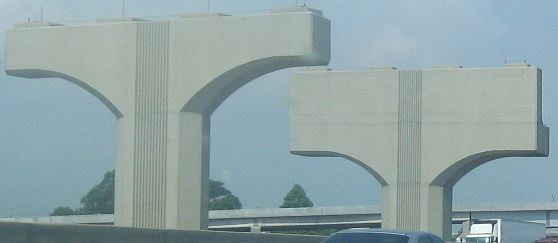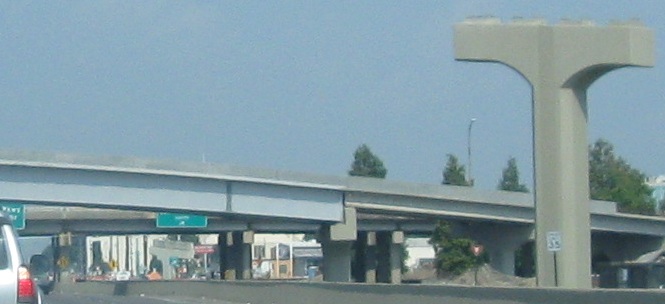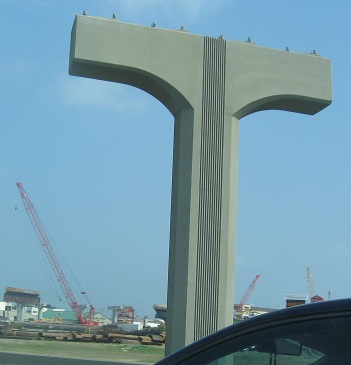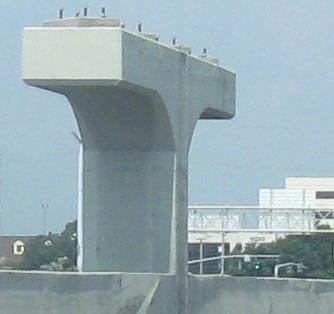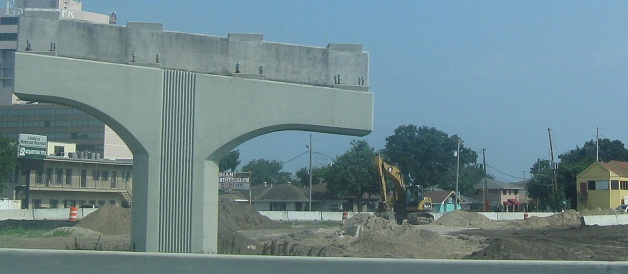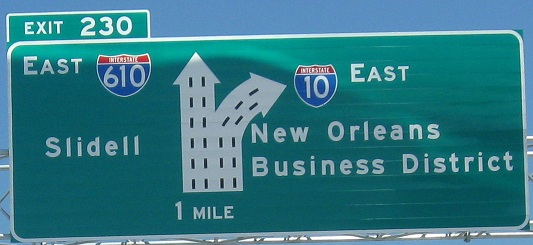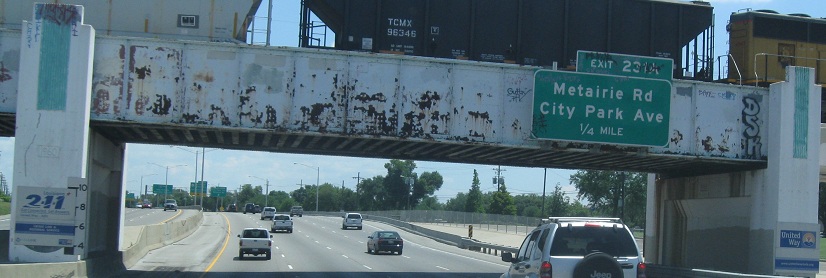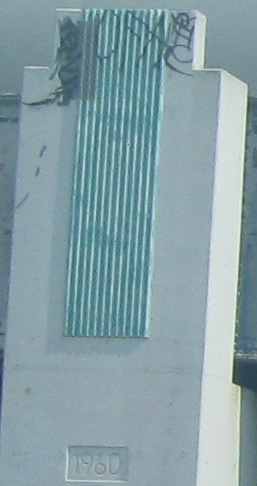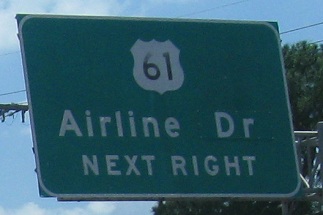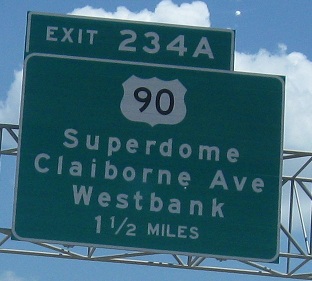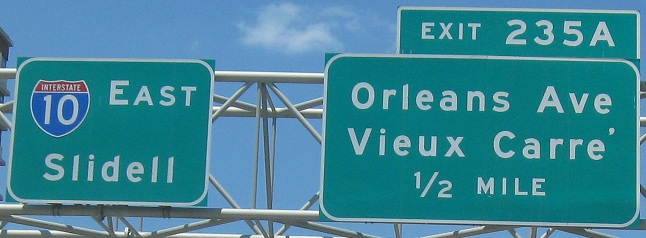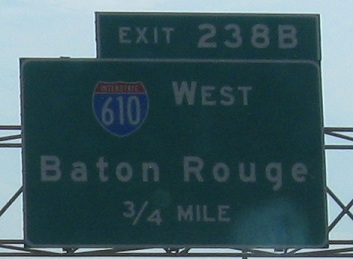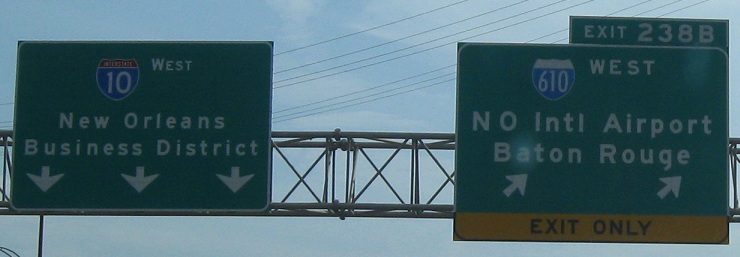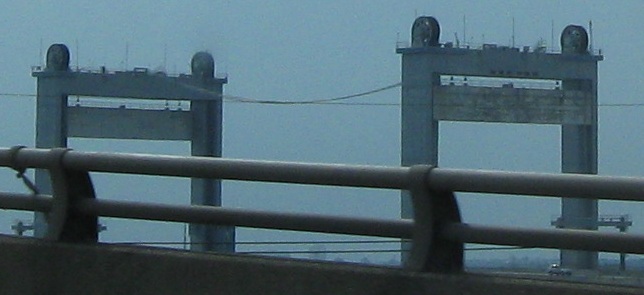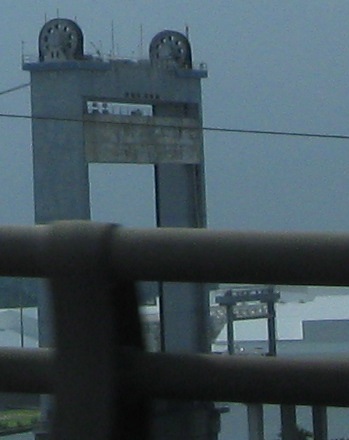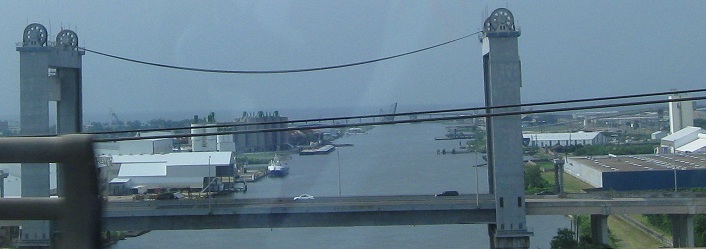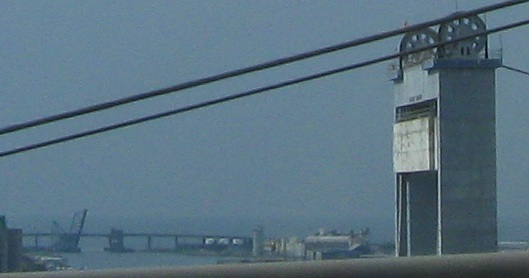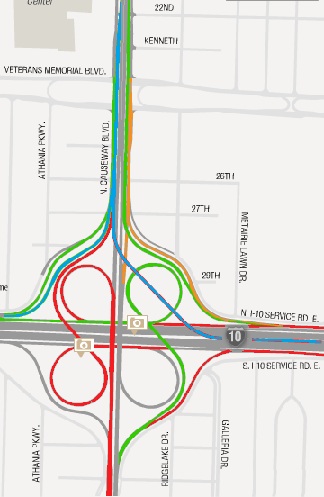 | I-10 EB to either direction of Causeway Blvd. remains a normal loop. I-10 WB to Causeway SB is a normal loop (shown in red). I-10 WB to Causeway NB, in green, flies over the Causeway NB ramp to Veterans Blvd. (in orange), and there's a separate ramp (also in orange) to get I-10 WB traffic to Veterans. Causeway NB to I-10 EB is a normal ramp, and to I-10 WB is a variation on a typical loop ramp. By leaving the roadway south of the first loop, it eliminates the weave of a typical cloverleaf, at the expense of a separate overpass of I-10 to get to the loop. Causeway SB to I-10 is shown in blue. It flies up between Causeway Blvd. and the ramp from Veterans, splitting into a normal ramp to I-10 WB and a long flyover into the center of I-10 EB. While left-side merges are discouraged, there's just not much else that can be done here, and traffic will be coming in at a high speed off a straight downgrade. Finally, Veterans to I-10 WB is shown in green - it comes up next to the Causeway SB ramp and splits to the right, and Veterans to I-10 EB is shown in red - it crosses under the Causeway SB-I-10 WB ramp and does the same modified loop as the NB-WB ramp. It apparently was just too complex to combine the Causeway and Veterans ramps to I-10 WB into a single entity. Not shown here is Veterans to Causeway SB, which I assume is a slip ramp underneath the blue Causeway SB ramp.
So, back to the photos. The first few photos show the Causeway SB-10 EB ramp touching down in the median. In the first photo, the blue ramp flying overhead is the Causeway NB-10 WB loop ramp (as I said, requires a separate overpass). In the fifth photo, as the center ramp merges in, there's a new ramp on the WB side taking Bonnabel Blvd. and frontage road traffic onto I-10. It's braided (I just defined it in my definitions, so read up) with the 10 WB Exit 226 ramp to Causeway due to the traffic volumes from 10 to Causeway. |



